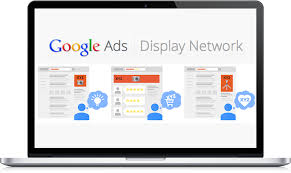
What is Display Advertising and How Does Google Display Ads Expands Advertiser Visibility?
What is Display Advertising and How Does Google Display Ads Expand Advertiser Visibility?
What is Display Advertising
Display advertising refers to a type of online advertising that uses visual elements, such as images, graphics, videos, and interactive media, to convey a marketing message to target audiences. These advertisements are displayed on websites, social media platforms, mobile apps, and other digital platforms that users interact with.
Key features of display advertising include:
- Visual Content: Display ads are known for their visual appeal. They often incorporate images, graphics, animations, and videos to capture users’ attention and convey the brand’s message.
- Variety of Formats: Display ads come in various formats, including banner ads, pop-up ads, video ads, interactive ads, and more. Each format has its own strengths and can be chosen based on campaign objectives and audience preferences.
- Placement: Display ads are strategically placed on websites and platforms that are relevant to the target audience. Advertisers can select specific websites, apps, or networks for ad placements, and they often use targeting options to reach users with specific interests, demographics, or behaviors.
- Targeting Options: Display advertising platforms allow advertisers to target their ads to specific audiences based on factors such as age, gender, location, interests, browsing history, and online behavior. This enables advertisers to deliver relevant ads to the right people.
- Retargeting: Display ads also support retargeting, which involves showing ads to users who have previously visited a website or interacted with the brand online. This helps reinforce brand awareness and encourages users to complete desired actions, such as making a purchase or filling out a form.
- Brand Awareness: Display advertising is often used to increase brand visibility and awareness. Since display ads are visually engaging, they can leave a lasting impression on users even if they don’t immediately click on the ad.
- Performance Metrics: Advertisers can track the performance of display ads using metrics such as impressions (number of times an ad is displayed), clicks, click-through rates (CTR), conversions, and return on investment (ROI).
- Ad Networks and Platforms: There are various ad networks and platforms that facilitate the placement of display ads. Google Display Network, Facebook Audience Network, and programmatic advertising platforms are examples of platforms that allow advertisers to reach a wide range of online audiences.
- Responsive Design: With the increasing use of mobile devices, display ads often need to be responsive, meaning they adapt to different screen sizes and orientations to provide a seamless user experience.
Display advertising is a fundamental component of digital marketing, and it’s used by businesses and organizations of all sizes to promote products, services, events, and initiatives. Successful display advertising campaigns involve creating compelling visuals, targeting the right audience, and analyzing performance data to optimize results.
How Does Google Display Ads Expand Advertiser Visibility?
Google Display Ads is a powerful advertising platform that enables advertisers to expand their visibility and reach a wide range of audiences across the internet. It allows advertisers to showcase their products, services, and brand on a network of websites, apps, and other digital platforms. Here’s how Google Display Ads can expand advertiser visibility:
- Massive Reach: Google Display Network (GDN) reaches over 90% of global internet users across millions of websites, blogs, news sites, and mobile apps. This extensive reach ensures that advertisers can connect with a diverse and vast audience.
- Diverse Ad Formats: Google Display Ads supports a variety of ad formats, including static images, animated GIFs, video ads, responsive ads, interactive ads, and more. This flexibility allows advertisers to choose the format that best suits their campaign goals and creative assets.
- Contextual Targeting: Advertisers can use contextual targeting to display ads on websites and pages that are contextually relevant to their products or services. Google’s algorithms analyze the content of web pages to determine the best placement for ads.
- Audience Targeting: Google Display Ads offers advanced audience targeting options. Advertisers can target based on demographics (age, gender), interests, behaviors, topics, keywords, and more. This precise targeting ensures that ads are shown to the right people.
- Remarketing: Remarketing allows advertisers to show ads to users who have previously visited their website or interacted with their brand. This technique helps reinforce brand awareness and encourages users to convert.
- Lookalike Audiences: Advertisers can create lookalike audiences based on their existing customer lists. Google identifies users with similar characteristics to the advertiser’s current customers, expanding the potential reach of the campaign.
- Managed Placements: Advertisers can select specific websites or apps for ad placements. This control allows them to target websites that align with their brand and audience preferences.
- Responsive Display Ads: Responsive ads automatically adapt to different ad sizes and placements. This feature ensures that ads look visually appealing and well-optimized across various devices and screen sizes.
- Performance Tracking: Google Display Ads provides detailed performance metrics such as impressions, clicks, click-through rates (CTR), conversions, and cost-per-click (CPC). Advertisers can analyze these metrics to refine their campaigns for better results.
- Ad Extensions: Advertisers can use ad extensions to provide additional information and enhance the ad’s visibility. These extensions can include call buttons, site links, location information, and more.
- Cross-Device Reach: Google Display Ads reaches users across different devices, including desktops, tablets, and mobile phones, allowing advertisers to engage with audiences wherever they are.
By leveraging the extensive reach, targeting options, and ad formats of Google Display Ads, advertisers can effectively increase their brand visibility, engage with potential customers, and drive desired actions such as website visits, sign-ups, and conversions.
